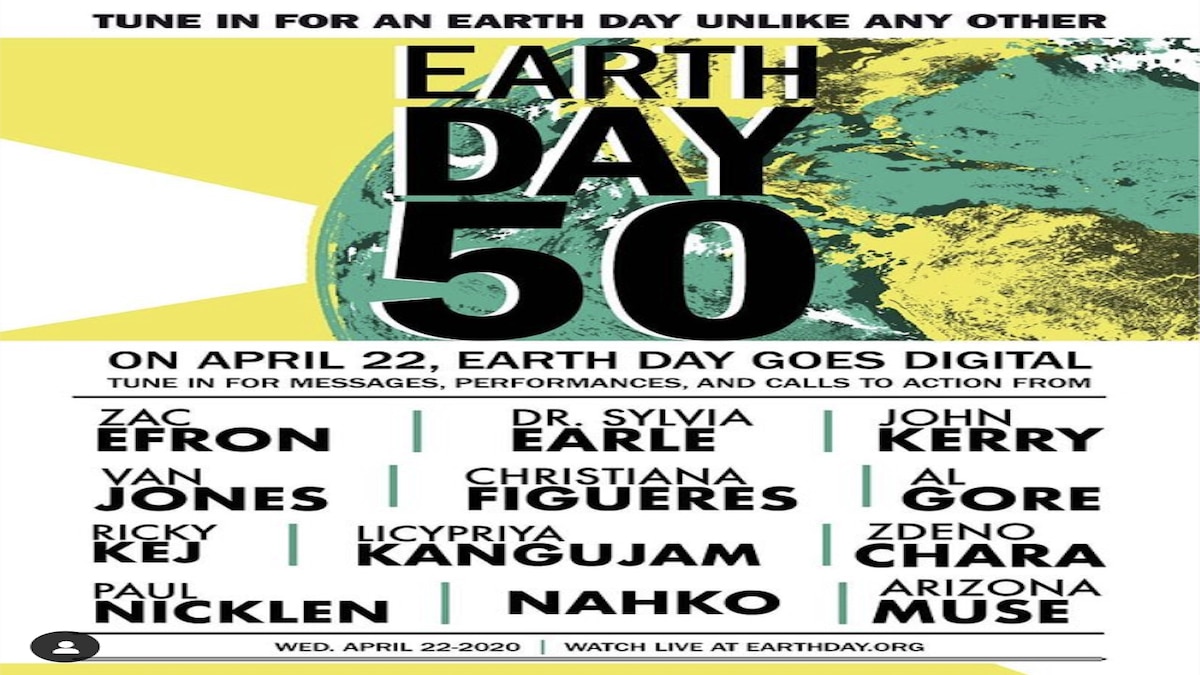

The "Earthrise" photograph that inspired the first Earth Day. NASA / Bill Anders
For EcoWatchers, April usually means one thing: Earth Day. But how do you celebrate the environment while staying home to prevent the spread of the new coronavirus?
Luckily, the Earth Day Network has you covered. The organization announced in March that it would celebrate the 50th anniversary of Earth Day with its first ever Digital Earth Day April 22.
“At Earth Day Network, the health and safety of volunteers and participants in Earth Day events is our top concern. Amid the recent outbreak, we encourage people to rise up but to do so safely and responsibly — in many cases, that means using our voices to drive action online rather than in person,” Earth Day Network President Kathleen Rogers said.
Here are three things you can do from the safety of your home to celebrate the Earth.
1. Join EARTHRISE
When life gives you lemons, make lemonade!
— EARTHDAY.ORG (@EarthDay) March 30, 2020
To amid the COVID-19 outbreak, we are switching to a digital #EarthDay.
Check out #EarthRise and find more info to connect and help our earth! https://t.co/8JY6wwuvXj
On Earth Day itself, the Earth Day Network is organizing 24 hours of “global digital mobilization” called EARTHRISE after the famous picture of our planet from space that inspired millions to agitate for the first Earth Day in 1970.
“The coronavirus pandemic does not shut us down,” the organizers wrote. “Instead, it reminds us of what’s at stake in our fight for the planet. If we don’t demand change, our current state will become the new normal — a world where pandemics and extreme weather events span the globe, leaving already marginalized and vulnerable communities even more at risk.”
You can participate using the hashtags #EarthDay2020 and #EARTHRISE.
The Earth Day Network is asking participants to speak up for the planet, vote for leaders who promote environmental policies or contact their representatives and educate others about the importance of taking care of the Earth. It is also organizing 24 actions that you can take from your home, one for each hour of the day.
2. Take the Earth Day Daily Challenge
It’s April 1st, but this is no joke — we’re issuing a daily micro challenge for you to take, every day, wherever you are, to help fight our climate crisis while you might be staying home to #bendthecurve.
— EARTHDAY.ORG (@EarthDay) April 1, 2020
Are you ready for 22 days of the #EarthDay #Challenge? pic.twitter.com/LCJDdTUeiu
You don’t have to wait for April 22 to start making a difference. The Earth Day Network is also organizing 22 daily challenges you can take to fight the climate crisis from lockdown.
The challenge began April 1 with a “plastic audit.” Simply look for ways you can reduce your plastic usage and share your techniques.
Yesterday’s challenge was to “compost creatively” if you can’t use all the food you brought home in your latest grocery store haul.
You can follow @earthdaynetwork’s social media channels for each day’s challenge.
3. Be a Citizen Scientist
Are you excited to be a part of our #EarthChallenge2020 Research Community?
— EARTHDAY.ORG (@EarthDay) April 1, 2020
Together we'll record over 1 billion data points accessible for research on environmental topics! Our #MobileApp will be released this April! https://t.co/pJsYF7GIy4 pic.twitter.com/FWS9zLAxJh
You don’t need a fancy laboratory or a white coat to be a scientist. All you need is a mobile device.
As of April 1, the Earth Challenge 2020 mobile app has been made available at the Android or Apple app stores. You can download it now and begin collecting data on plastic pollution and air quality.
That data will be part of Earth Challenge 2020, a joint initiative from the Earth Day Network, the U.S Department of State’s Eco-Capitals Forum and The Woodrow Wilson International Center for Scholars to create what they say will be the “world’s most accessible and transparent citizen science database portal ever created.”
The database will include more than one billion data points combining existing citizen scientist projects with the information submitted via the app. The priorities for the challenge were globally crowdsourced in 2017 in a call for the “most important questions in human and environmental health.”
The call turned up six focus areas:
- Plastics
- Air Quality
- Insects
- Climate
- Food Security
- Water Quality
The challenge will begin with plastics and air quality data, and move on to all six areas over the course of 2020.
Citizen science is a fitting way to celebrate Earth Day because the original Earth Day was all about mobilizing around science, one of its key organizers Denis Hayes pointed out.
“When 20 million Americans participated in the first Earth Day, they believed the warnings of scientists, as did the U.S. Congress,” Hayes said. “In a decade of bipartisan support for science, Congress passed a set of forward-thinking laws that protected human health, species and the planet.”
Now, governments and people have a chance to follow that example in response both to the climate crisis and COVID-19.
“Our current pandemic demonstrates that governments must embrace science early. As we see now, many governments were slow to respond or even indifferent about the science of the coronavirus pandemic,” Rogers said. “But the last few weeks have also demonstrated that our society, even at the international level, is capable of mass shifts across all sectors to meet a crisis head-on. We must apply the same scale and urgency of our response to climate change.”

 233k
233k  41k
41k  Subscribe
Subscribe 